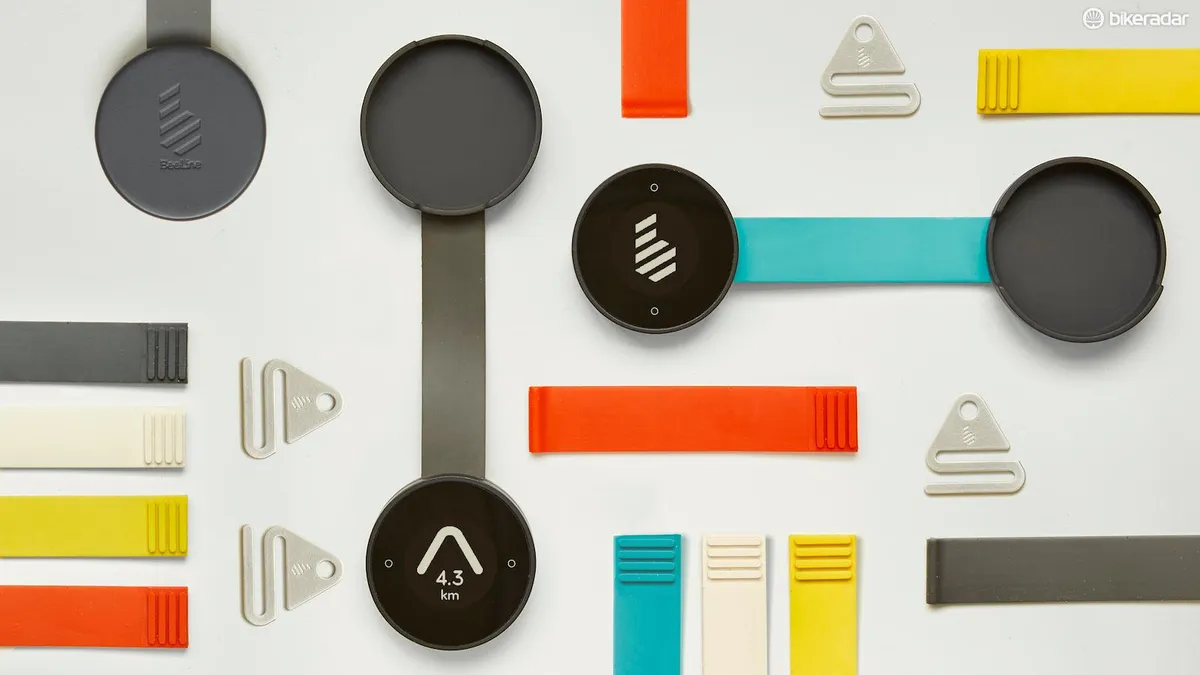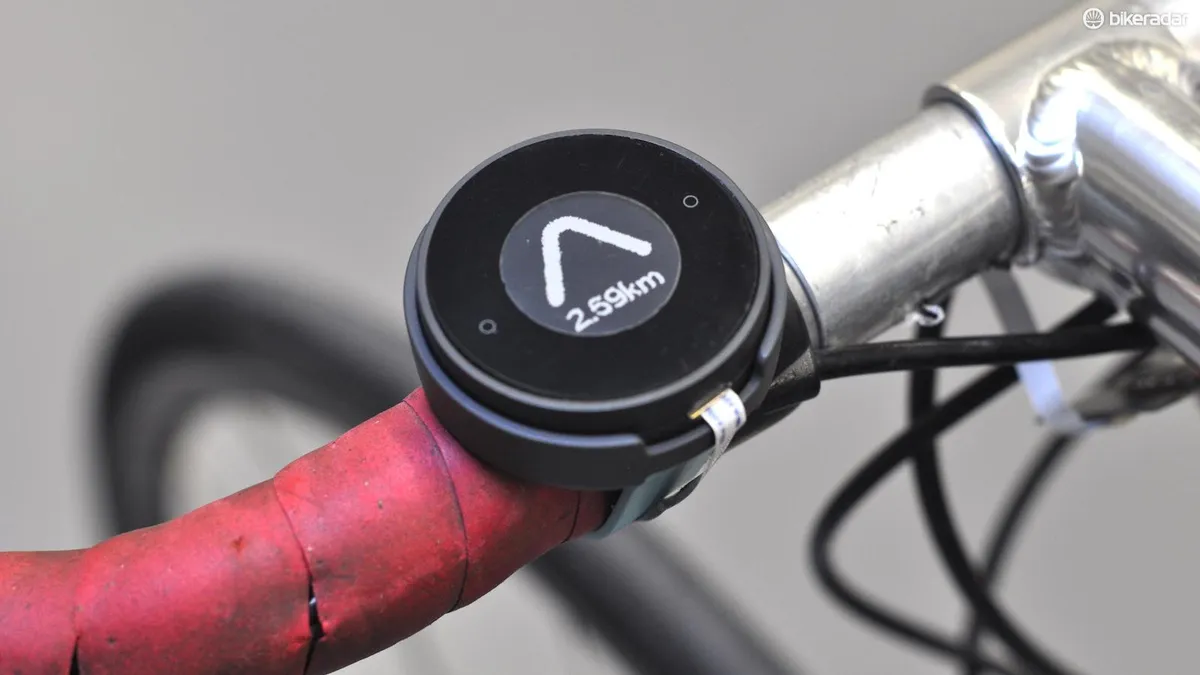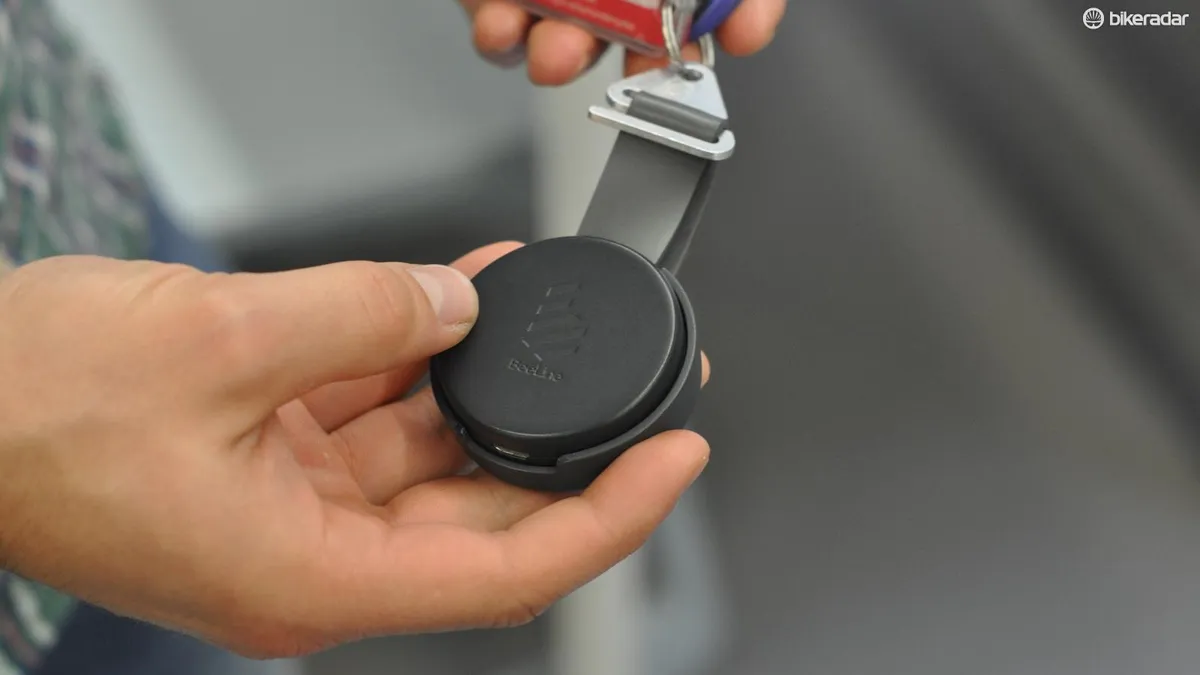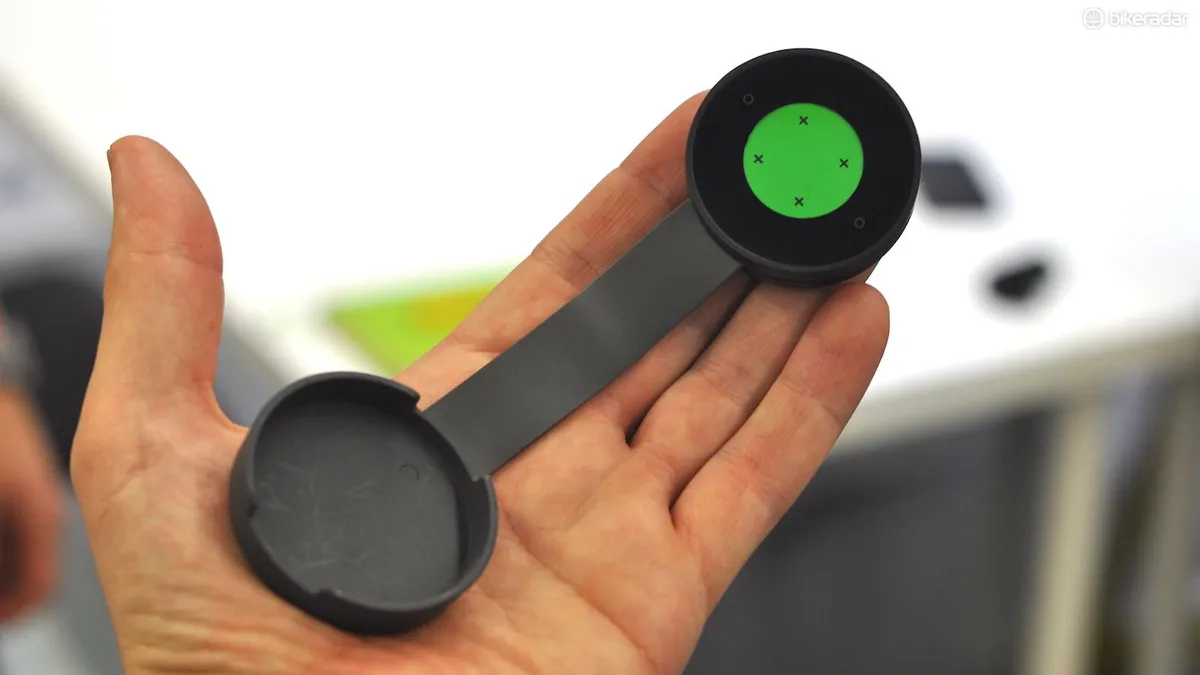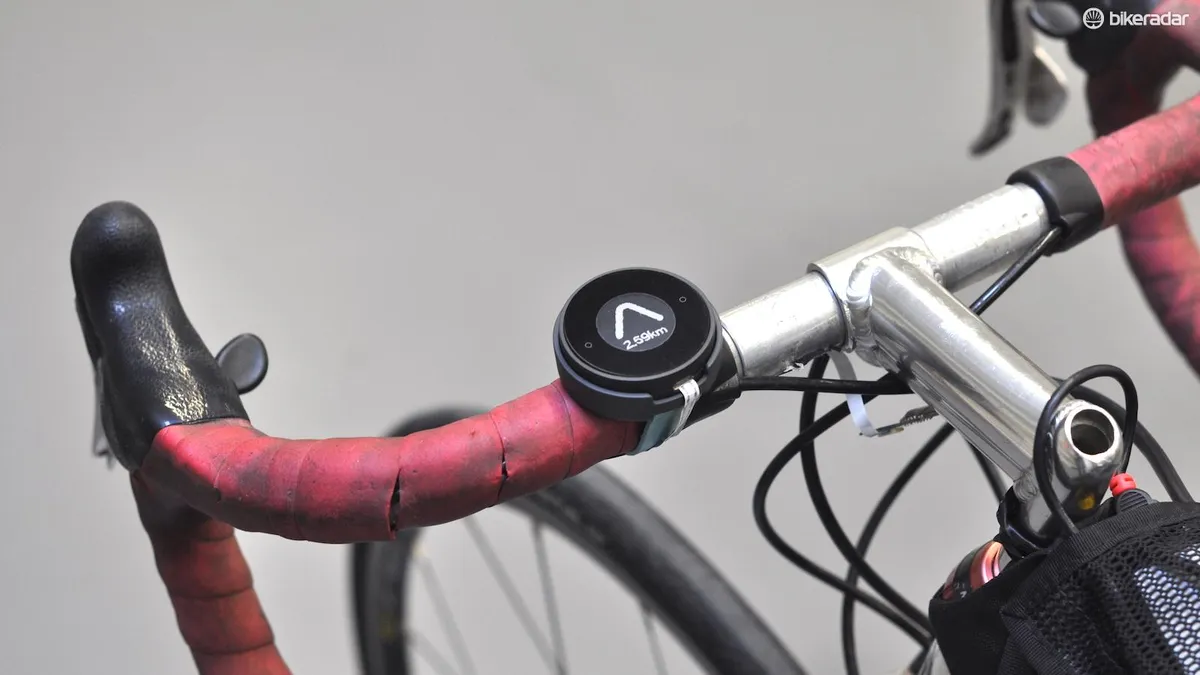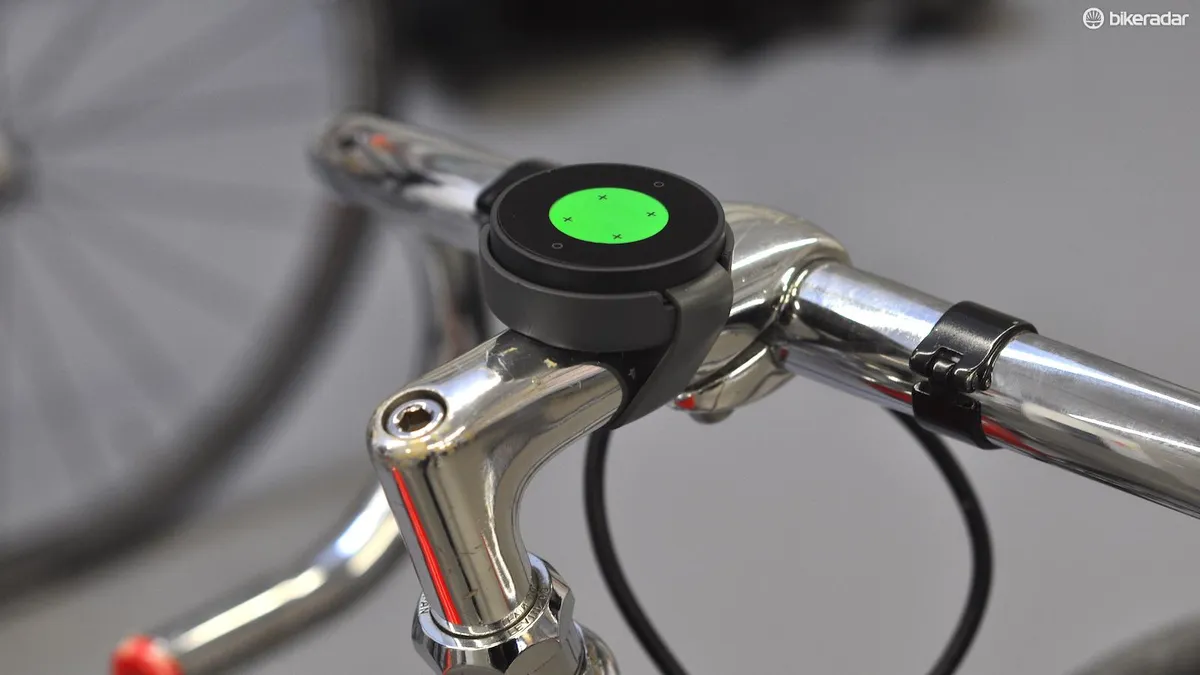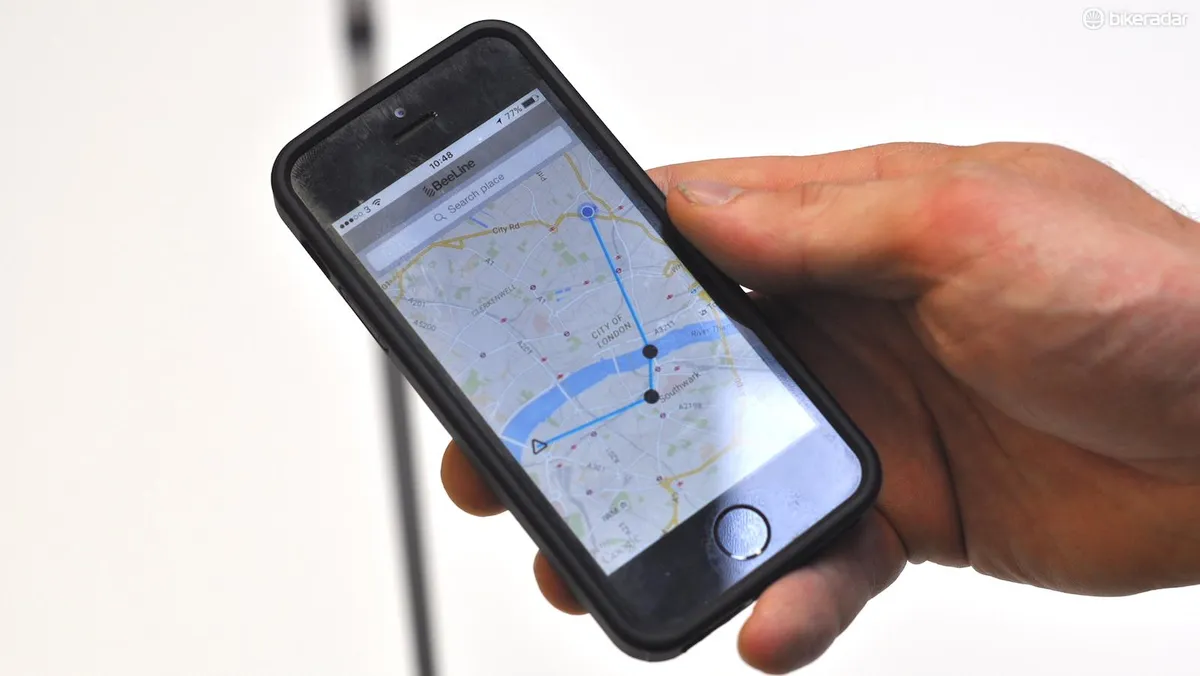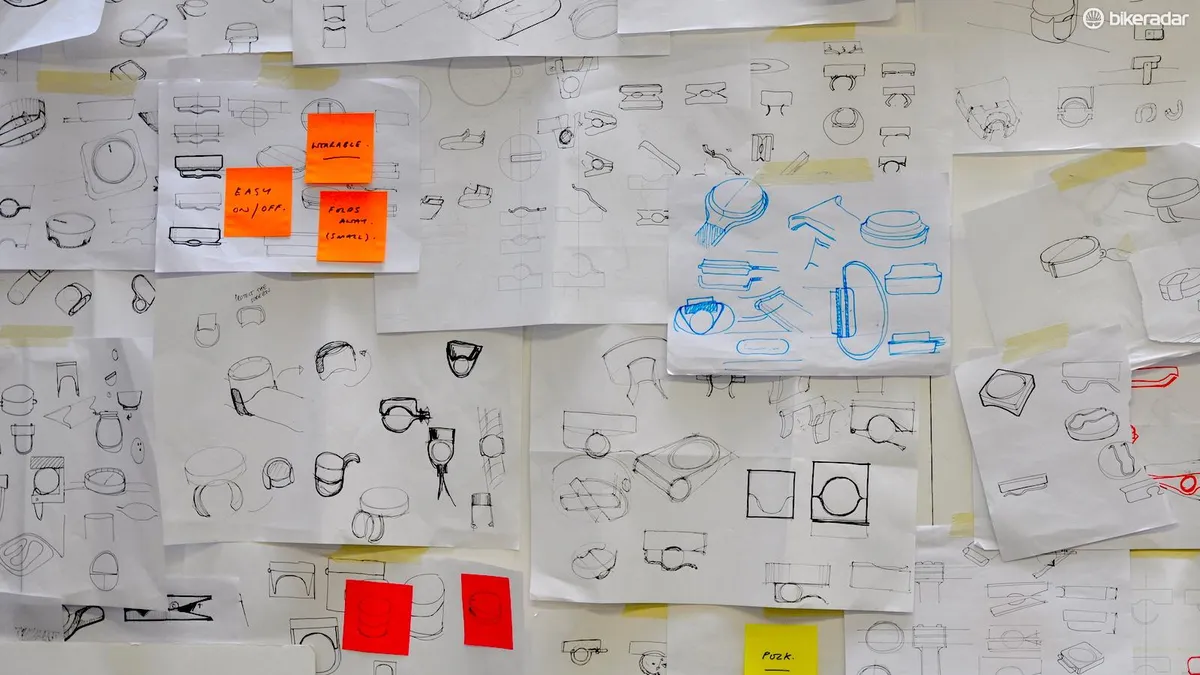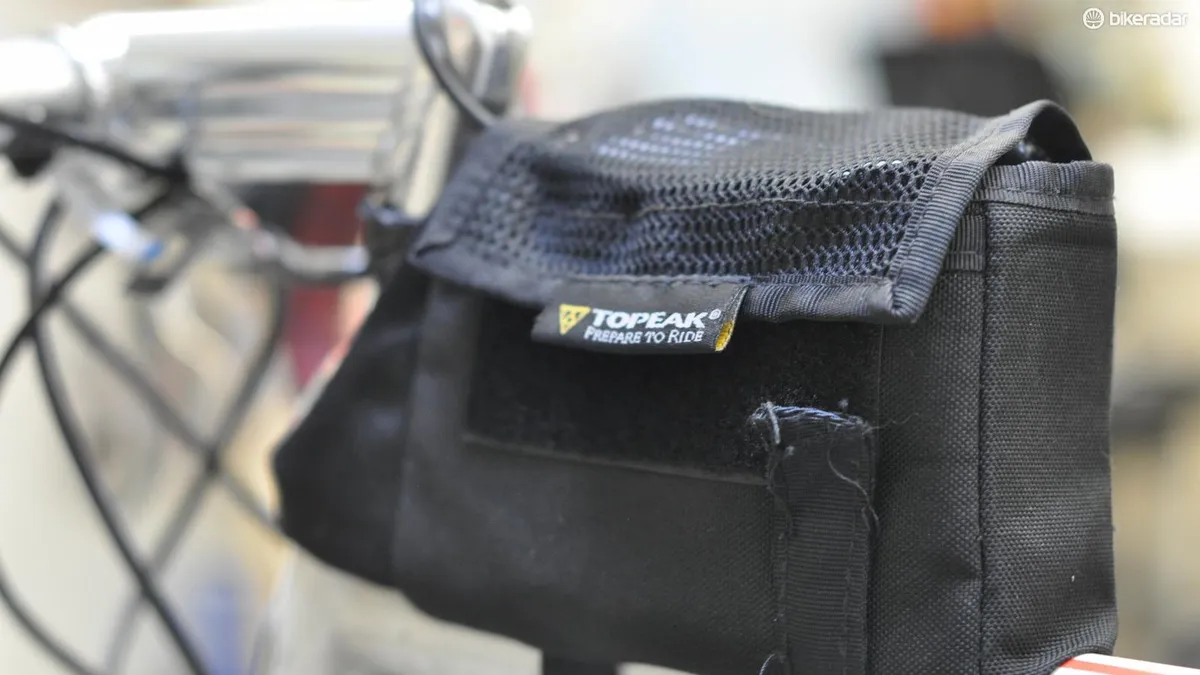Bike sat-nav is not a new thing. GPS-equipped computers with bike-specific turn-by-turn functionality have been with us since the days of the Garmin Edge 705, but while data-capturing computers have plummeted in price, bike navigation has mostly remained the preserve of gadgets that sell for bigger bucks.
BeeLine is promising to give your bike navigation for just £30 (US$46 / AU$64). At least, that’s the earlybird price for the Kickstarter crowdfunding campaign, which launched the device today. (If you miss out on that, it’ll be a still-rather-good £40, and final RRP is £60.)
Related: Garmin Edge 1000 review
Your £30 will net you a lightweight, shock- and waterproof plastic puck with a 1in backlit ‘e-paper’ display (that’s a monochrome LCD to you and me), which borrows your smartphone’s GPS capability over a Bluetooth LE connection to tell it where it needs to direct you.
There’s no built-in GPS; thanks to a magnetometer (compass), accelerometer (movement sensor) and gyroscope, the BeeLine understands which way it’s facing and which way up it is, so once it knows where you want to get to, it points you in the right direction. The theory goes that you just plug your destination into the BeeLine app, send to the device with a tap, and ride off. Because the gadget is relatively simple, battery life from a 400mAh unit could be as high as 40 hours.
Consumer tech, not sportswear
I had a look at a prototype BeeLine device last week in its creators’ studio in east London. The unique industrial design is almost nailed down: BeeLine looks nothing like most bike computers, sharing more in common with smartwatches and other consumer tech.
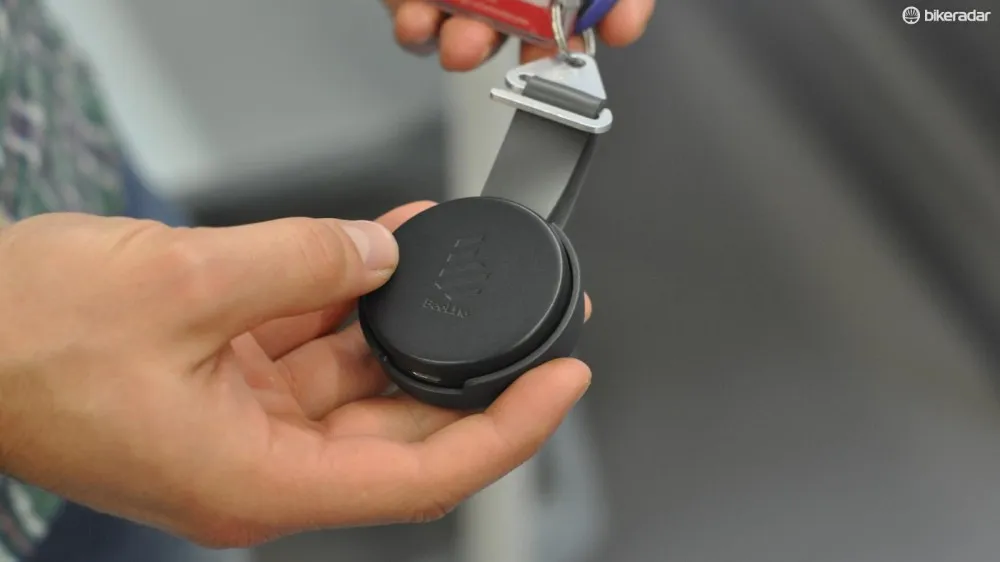
BeeLine doubles as a fancy (and pretty chunky) keyring
It sits in a cleverly designed casing that acts both as a mount and screen protector – a silicone strap connecting the two allows it to wrap itself around any bar on your bike. Take it off, and a slide-on aluminium buckle lets you carry it as a keyring, too.
Functionality-wise it’s much earlier days. The ‘working’ BeeLine still has a chunky external battery pack and blocky graphics. The on-off method hasn’t been decided (it could be done from your phone via Bluetooth LE), touch buttons are yet to be added either side of the screen, the mechanism that secures the gadget into its case/clasp is yet to be finalised, the on-screen graphics need to be anti-aliased and a speedometer and odometer added and the companion app basically needs creating from the ground up. But the navigation is there.
It’s navigation, Jim…
That said, this ain’t cycle navigation as we know it. BeeLine’s founders, Tom Putnam and Mark Jenner, opted to steer clear of turn-by-turn in favour of what they’re calling ‘Fuzzy Navigation’ (shouldn’t that be ‘buzzy?’). The readout consists only of an arrow pointing towards your final destination and showing the total as-the-crow-flies distance to it, so it’s your responsibility to exercise common sense in how you get there.
One French phrase springs to mind: cul-de-sac.

A closer look at the screen. The blocky graphics are due to be refined, and a speedo and odometer added
“I thought the same thing,” says Putnam, “before we built a concept app and I took it for a ride. Mark sent me to a random pub, and I popped straight to it.”
“In the testing we’ve done, [encountering dead-ends and one-way streets] hasn’t happened that much. You start to get better at it – you learn ‘that’s not going to work’ and you look for street signs, rather than just blindly listening to what you’re being told.”
The two also claim that gives a sense of achievement and greater sense of freedom than the dictations and re-routings of a turn-by-turn nav device. “Our testers liked the feeling of being more active in the decision-making," Jenner says. "When they get it right, it feels good.”
Related: The best GPS Devices for cycling
The proof of Fuzzy Navigation’s efficacy will be in the testing. In any case, BeeLine is not a navigator for everyone. If you’re in the market for a Garmin Edge 1000 to hook up to your power meter, heart-rate monitor and cadence sensors, a BeeLine wouldn’t quite do the same trick.
Also, in order for Fuzzy Navigation to work, it requires there to be a certain density of roads; it’s not much use if the only tarmac for miles is heading in the wrong direction.
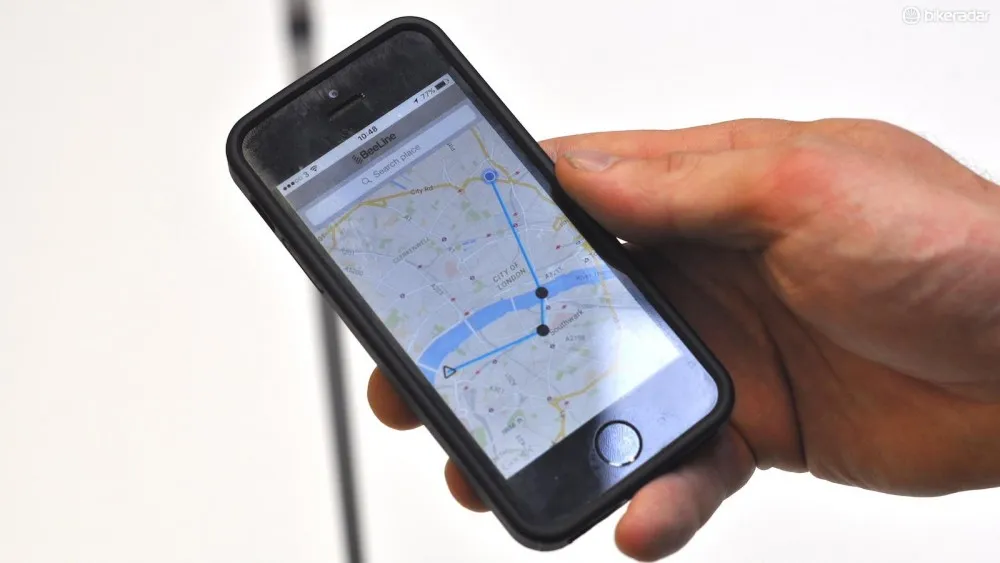
When the app's finished it'll be possible to add waypoints along the route
One possible way to allow BeeLine to be more useful than a chocolate cafetiere in rural situations is the waypoint functionality that’ll be ready for launch, allowing you to specify drop-in points on your route. Another option is altogether more interesting.
The community is key
“The long-term plan is to build [functionality] through software,” Jenner tells me. In theory it will be trivial to add turn-by-turn to BeeLine, along with many other capabilities, so the founders are planning to use the ideas and of the Kickstarter crowd to spec out the future of the device.
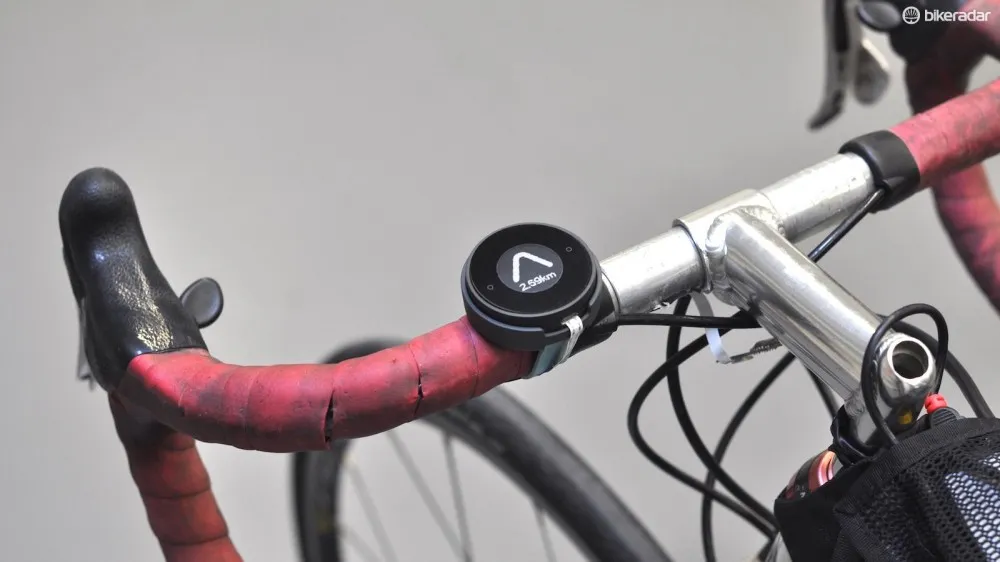
Anyone got any spare bar tape?
“One idea we’ve discussed is gamification”, says Putnam. “With Strava you get scored on your speed. With this your challenge is not to go as fast as you can but to take the most direct route, so you’ll find yourself trying to sneak down alleys and in front of a housing estate and thinking ‘can I get through there?’“
I point out that it would be handy, as a Strava user, for BeeLine to be able to trigger recording on your phone – simple, they say, especially when the buttons are added.
If BeeLine achieves its £60,000 funding target, finished devices are expected to ship in August 2016. It’s definitely one to watch, but it means a bit of a wait until you can see just how lost Fuzzy Navigation will get you. If you’re keen to find out, head over to the BeeLine Kickstarter page.

